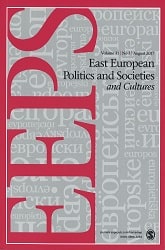Opening a Non-exit State: The Passport Policy of Communist Poland, 1949–1980
Opening a Non-exit State: The Passport Policy of Communist Poland, 1949–1980
Author(s): Dariusz StolaSubject(s): Political history, Government/Political systems, International relations/trade, Post-War period (1950 - 1989), History of Communism, Migration Studies
Published by: SAGE Publications Ltd
Keywords: Poland; history; 1949-1989; communist regime; international; migrations; passports;
Summary/Abstract: This article presents the passport policy of communist Poland, from the late 1940s to 1980. In the late 1940s, the policy and the institutions that implemented it were given objectives and forms similar to those in the USSR. This Soviet-type policy was in principle a non-exit policy; issuing a passport was an exception that required a solid justification. However, after 1953, following the Soviet Thaw, Polish leaders gradually relaxed the restrictions on exit, which allowed for massive outflows, mainly to Germany and Israel, and for development of temporary mobility, mainly within the Soviet bloc. In the late 1950s, the Polish party restricted emigration but it did not return to the Stalin-era non-exit model. The party developed a new, complex passport policy, which favorably viewed mobility within the bloc and was selective toward travel to the West. This allowed international mobility to expand to a mass scale and become part of the lived experience of millions of Poles. The police apparatus that implemented the policy also expanded and evolved into a complex bureaucratic machinery, but to its end it combined the features of a Weberian bureaucracy with the characteristics of a revolutionary, extralegal “secular arm of the party.”
Journal: East European Politics and Societies
- Issue Year: 29/2015
- Issue No: 01
- Page Range: 96-119
- Page Count: 24
- Language: English
- Content File-PDF

